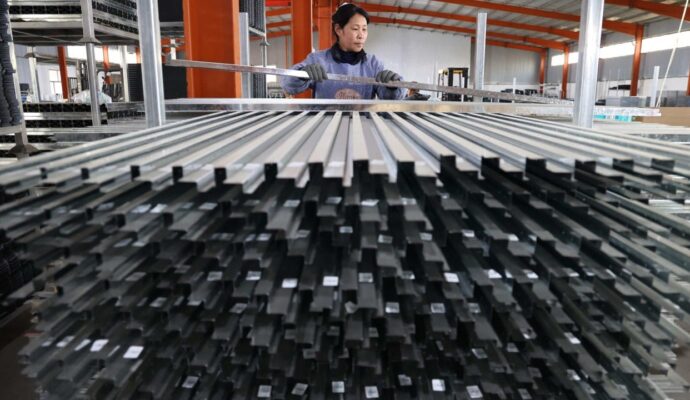This morning’s lift-off marks the second attempt for the Zhuque-2, after an unsuccessful launch on December 14.
Methane-powered engines – with their high performance and low operational costs – are particularly suited for the developing trend of reusable rockets. The technology is regarded as the front-running design in the new era of rocketry.
The Zhuque-2 rocket ahead of the successful launch on Wednesday. Photo: Weibo
The Zhuque-2 team’s achievement is another success for China’s private aerospace sector this year, following the successful launch in April of Space Pioneer’s liquid-propelled Tianlong-2.
The Zhuque-2 is a two-stage liquid-propellant carrier rocket, with all independently developed engines.
According to China Space News, the 49.5 metres (162ft) long rocket with a diameter of 3.35 metres (10.9ft) has a carrying capacity of six tonnes for low Earth orbit and four tonnes for SSO.
“The first stage of the rocket utilises four Tianque-12 [TQ-12] liquid oxygen methane engines, achieving a thrust of 268 tonnes. The second stage combines one Tianque-12 and one Tianque-11 [TQ-11] engine,” the report said.
Testing of the TQ-12 engine started in July 2019, with Wednesday’s launch coming after four years of research and development by the company.
In the early stages of liquid rocket development, with natural gas technology still in its infancy, kerosene and liquid hydrogen were commonly used as fuel.
Today, the excellent quality of natural gas produced from certain high-grade fields means that after liquefaction it can be used directly as rocket engine fuel, without the need for additional purification.
The benefits of natural gas – which include high combustion efficiency, environmental friendliness, low cost, and easy production – are becoming increasingly prominent, making it a favoured choice for researchers.
In terms of propellant performance, liquid methane and traditional liquid kerosene each have their strengths and weaknesses.
Although methane’s density is about 20 per cent less than kerosene, it offers a slightly higher theoretical specific impulse – the impulse produced per unit of propellant, depending on engine design.
Methane also outperforms in engine maintenance. Liquid oxygen kerosene rockets require thorough engine cleaning after each use. In contrast, the high volatility of methane significantly lightens the post-recovery cleaning workload.
Most carbon-based fuels will leave deposits on the engine during use, but using methane overcomes this problem, prolonging the engine’s life and making it more environmentally friendly to use.
In terms of fuel tank design, the developers have been able to reduce the overall weight of the methane-fuelled rocket and enhance its payload capacity.



